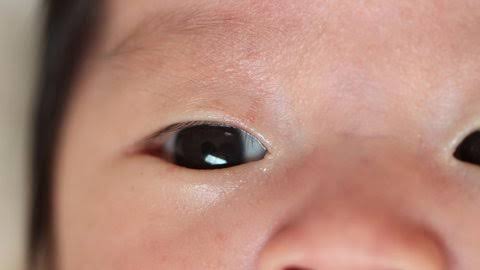
What are Retinopathy of Prematurity Stages?
Retinopathy of Prematurity (ROP), is also called baby blindness. It is a condition that causes blindness in infants. It happens when the blood vessels in the eye do not grow properly. ROP can be treated, but only up to stage 4. Even with surgery, there is still a chance that the baby may lose vision. Retinopathy of Prematurity stages are 5 in total. The first two stages usually don’t need treatment but need regular monitoring. However, stages 3, 4, and 5 are more severe and come with significant health risks. Rop screening can help find it early and get it treated.
Retinopathy of Prematurity: What you should know!
Let’s take a closer look at Retinopathy of Prematurity (ROP) and some key facts to help stay alert. This condition ROP directly affects the retina. The part of the eye, which is responsible for vision. In this condition, the blood vessels in a baby’s eyes do not grow properly or may grow abnormally. This can cause serious vision problems if not detected and treated early.
Why does this happen? While the baby is in the womb. Their eyes develop with the help of oxygen from the mother. If there is a shortage or fluctuation in oxygen levels, it can cause the blood vessels to grow abnormally. Because these blood vessels are not normal, there is a higher chance they may leak, scar, or even pull the retina away from the eye. These can lead to more severe Retinopathy of Prematurity stages 4 & 5.
Thus, ROP can lead to retinal detachment in infants, which is a serious condition. Early treatment from an eye specialist in Nagpur at ABO Eye Hospital, can help prevent severe vision loss.
Babies who weigh 1.8 kg or less are at a higher risk of developing Retinopathy of Prematurity (ROP) and experiencing vision loss.
Why does this happen? Premature babies might not get enough oxygen. This can affect the growth of blood vessels in the retina, which is vital for vision. As a result, the blood vessels grow abnormally, leading to ROP. This condition commonly affects babies born before 31 weeks of gestation and those with a low birth weight.
“Simply put, the smaller the baby at birth, the higher the chances of developing Retinopathy of Prematurity Stages more severely.”
Other factors that can serve as warning signs for Retinopathy of Prematurity (ROP) include:
- Babies who have had infections or other medical issues
- Respiratory distress syndrome
- Intracranial hemorrhage (bleeding in the brain)
However, visit the right eye specialist in Nagpur within 1 month of the birth of a premature baby as soon as you notice any signs of ROP. Or if your baby weighs less can be very helpful. The higher the stage of Retinopathy of Prematurity, the more severe the treatment needed. In some cases, even after treatment or surgery, vision loss may still occur.
Retinopathy of prematurity stages are classified based on severity, from mild to severe. Surgery or laser therapy may be required in certain situations. They can prevent further damage and preserve vision. Let’s explore the different stages of Retinopathy of Prematurity.
The various Retinopathy of Prematurity Stages
The ROP stages are categorized into five stages:
Stage 1:
The first stage of ROP does not require treatment. At this stage, the problem has just begun, and the blood vessels in the retina are starting to grow abnormally but are still mild. In some cases, this stage may stop on its own, so treatment is not needed. However, it is important to have regular ROP screenings to monitor if the condition progresses.
Stage 2:
In stage 2, the abnormal blood vessels continue to grow, and the growth is more noticeable than in stage 1. A ridge or line forms where the retina meets the area of abnormal vessels. Like retinopathy of prematurity stages 1 and 2 are also self-limiting and may not require treatment. However, close observation is important to ensure the condition does not progress to more severe stages.
Stage 3:
In retinopathy of prematurity stage 3, the growth of abnormal blood vessels becomes rigid, and the retina starts to detach. Treatment is very necessary at this stage to prevent vision loss. Fortunately, treatment is still possible at this stage, so it is important to seek medical help as soon as possible.
Stage 4:
At this ROP stage, the retina is partially detached from the back of the eye, which can cause serious vision problems. Surgery, such as a vitrectomy (removal of the vitreous gel), may be needed to try to reattach the retina and preserve vision. Treatment is urgent at this stage to prevent further vision loss.
Stage 5:
At stage 5 of retinopathy of prematurity, the retina is fully detached, which can lead to blindness. At this point, the eye may also develop complications like fibrosis or abnormal scar tissue. Vision loss at this stage is usually irreversible. While surgery may still be attempted, the chances of restoring vision are often very low.
Conclusion
Retinopathy of Prematurity (ROP) is a serious condition that affects premature babies and can lead to vision loss if not treated on time. The Retinopathy of prematurity stages are five with stages 4 and 5 being the most severe, often requiring surgery. Early detection is key to preventing severe vision problems. If you notice any signs of ROP or your baby is at risk, visiting an eye specialist in Nagpur, at ABO Eye Hospital, can help. Prompt treatment, regular eye check-ups, and ROP screening can make a big difference in protecting your baby’s vision.


